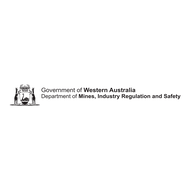A convoy of 20 vehicles with a crew of 40 has completed a 700 km seismic survey of the Canning Basin.
| Date: | Wednesday, 23 July 2014 |
|---|
It will take up to a year to process a massive amount of seismic data gleaned during an epic Kimberley road trip.
A 700 km, five-week road trip in the Kimberley that ended late last month has wrapped up field work for the Canning Basin Seismic Survey.
However, although the data might be in, it will take up to a year to process and interpret almost two terabytes of information before the Department of Mines and Petroleum (DMP) can publish the results online.
The aim of the $3.65 million project funded by the State Government’s Exploration Incentive Scheme is a better understanding of the geology of the region.
“Deep crustal seismic surveys such as this one provide information that shows us how the Australian continent was assembled as a result of plate tectonic process over billions of years,” DMP Geological Survey Executive Director Rick Rogerson said.
Dr Rogerson said that the Canning Basin survey was building on important geophysical surveys DMP had undertaken as part of the Kimberley Science and Conservation Strategy.
“Those surveys revealed details of the crust and upper mantle under the Kimberley,” he said.
“Now we want to see what the relationships are between the ancient rocks of the Pilbara region and the crust under the Kimberley, and the junction between these is under the Canning Basin.”
A massive amount of data was recorded by a convoy of about 20 vehicles with a crew of about 40 people that inched along the highway from Port Hedland, past Broome and Derby and on to the Gibb River Road.
Each day three specialised trucks would stop every 40 metres and deploy large metal pads to create minute vibrations barely perceptible to people 100 metres away but capable of penetrating up to 50km to 60 km deep through the crust and upper mantle.
“We hope the information answers some big questions about the geological framework of Western Australia,” Dr Rogerson said.
“An important use of the information from the top few kilometres in depth is in identifying areas that may be prospective for minerals and petroleum.”
Senior Geoscientist Louise Stelfox said the department was indebted to the Kimberley community for their assistance and patience during traffic disruptions caused by the survey.
The survey is a collaborative research project between the DMP and the Australian Government’s Geoscience Australia under the National Collaborative Framework, with Geoscience Australia managing the contract.
It links up with other important deep-crustal surveys undertaken by the department and Geoscience Australia, and adds to the growing number of deep crustal seismic reflection surveys that have been collected right across Australia as part of the Federal and State government co-funded National GeoTransect Program.

